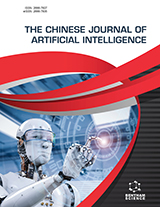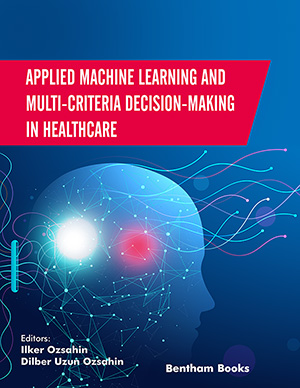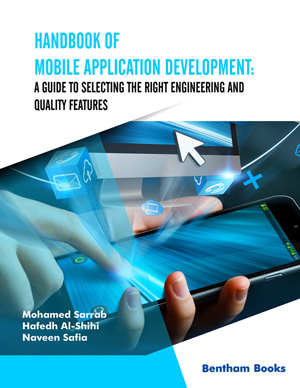Book Volume 1
Preface
Page: ii-iii (2)
Author: Abhishek Singh Rathore, Surendra Rahamatkar, Syed Imran Ali, Ramgopal Kashyap and Nand Kishore Sharma
DOI: 10.2174/9789815123708123010002
PDF Price: $15
Comprehensive Analysis of Video Surveillance System and Applications
Page: 1-17 (17)
Author: Nand Kishore Sharma*, Surendra Rahamatkar and Abhishek Singh Rathore
DOI: 10.2174/9789815123708123010004
PDF Price: $15
Abstract
In this growing age of technology, various sensors are used to capture data
from their nearby environments. The captured data is multimedia in nature. For
example, CCTV cameras are used in those places where security matters or where
continuous monitoring is required. Hence object detection, object recognition, and face
recognition became key elements of city surveillance applications. Manual surveillance
seems time-consuming and requires huge space to store the data; hence video
surveillance has a significant contribution to unstructured big data. All surveillance
techniques and approaches are based on Object Tracking, Target Tracking, Object
Recognition, and Object Mobile Tracking Systems (OMTS). The main difficulty,
however, lies in effectively processing them in real time. Therefore, finding a solution
still needs careful consideration. This paper mainly targeting to the smart city
surveillance system and inspects all existing surveillance systems based on various
tremendous technologies like a wireless sensor network, machine learning, and Deep
Learning. The author discovered the problems in the existing methods and summarized
them in the paper. The motive is to point out the various challenges and offer new
research prospects for the multimedia-oriented surveillance system over the traditional
surveillance system for the smart city network architecture. The thorough survey in this
paper starts with object recognition and goes toward action recognition, image
annotation, and scene understanding. This comprehensive survey summarizes the
comparative analysis of algorithms, models, and datasets in addition to targeting the
methodologies.
Compressed Video-Based Classification for Efficient Video Analytics
Page: 18-36 (19)
Author: Sangeeta*, Preeti Gulia and Nasib Singh Gill
DOI: 10.2174/9789815123708123010005
PDF Price: $15
Abstract
Videos have become a crucial part of human life nowadays and share a large proportion of internet traffic. Various video-based platforms govern the mass consumption of videos through analytics-based filtering and recommendations. Various video-based platforms govern their mass consumption by analytics-based filtering and recommendations. Video analytics is used to provide the most relevant responses to our searches, block inappropriate content, and disseminate videos to the relevant community. Traditionally, for video content-based analytics, a video is first decoded to a large raw format on the server and then fed to an analytics engine for metadata generation. These metadata are then stored and used for analytic purposes. This requires the analytics server to perform both decoding and analytics computation. Hence, analytics will be fast and efficient, if performed over the compressed format of the videos as it reduces the decoding stress over the analytics server. This field of object and action detection from compressed formats is still emerging and needs further exploration for its applications in various practical domains. Deep learning has already emerged as a de facto for compression, classification, detection, and analytics. The proposed model comprises a lightweight deep learning-based video compression-cumclassification architecture, which classifies the objects from the compressed videos into 39 classes with an average accuracy of 0.67. The compression architecture comprises three sub-networks i.e. frame and flows autoencoders with motion extension network to reproduce the compressed frames. These compressed frames are then fed to the classification network. As the whole network is designed incrementally, the separate results of the compression network are also presented to illustrate the visual performance of the network as the classification results are directly dependent on the quality of frames reconstructed by the compression network. This model presents a potential network and results can be improved by the addition of various optimization networks.
Object Detection and Tracking: Exploring a Deep Learning Approach and Other Techniques
Page: 37-53 (17)
Author: Samuel Oluyemi Owoeye*, Folasade Durodola and Jethro Odeyemi
DOI: 10.2174/9789815123708123010006
PDF Price: $15
Abstract
Object detection and tracking have a wide range of uses, for example, in
security and surveillance systems to deter and investigate crimes, for traffic monitoring,
and for communication through video sharing. In a smart city, data is continuously
being obtained through various means. In terms of video data, the data collected
through cameras and other digital devices need to be analyzed to derive useful
information from it. Hence, the concept of object detection and tracking comes into
play. This chapter looks into developing various frameworks for object detection and
tracking in the context of video data. We will be working with a database of 1,939
pencil images. These images will be used to train a neural network that performs image
classification tasks. Various object detection methods are implemented such as
Convolution Neural Network (CNN) image classification, Canny edge detection, object
detection using the Haar Cascade classifier, and background subtraction. The
experiments are carried out with Python programming language, TensorFlow, and
OpenCV library.
Introduction and Overview of Key Enabling Technologies for Smart Cities and Homes
Page: 54-71 (18)
Author: Karthika Dhanasekar* and Deepika Muni Krishna Reddy
DOI: 10.2174/9789815123708123010007
PDF Price: $15
Abstract
The Internet has come a long way in the previous three decades. It began as
a content-sharing platform for early websites, portals, and search engines. With the
globalization of Internet users, the importance and diversity of Internet material have
increased; the Internet is increasingly connecting people rather than just connecting
information. Other services, such as voice over Internet Protocol (VoIP) and video
chat, as well as social networks, have enabled the social web. The end-user has
changed as a result of the shift from information consumers to contributors and
producers. This trend has accelerated with the introduction of smartphones and Internet
of Things (IoT) devices. Smartphones have ushered in a new era of communication, in
addition to data. End-users may access information from wherever they need to connect
with their environment for basic everyday activities thanks to a new type of
communication. Cabs may be summoned in large cities by pressing a button on a
mobile device and using an app like Uber. The Internet connects things, dwellings,
cities, and everything else that can be linked, with early information associated with
individuals and later users engaging with other users via the social Web. As a result, a
smart platform with a wide range of smart services emerges. This chapter examines the
growing trend of connecting things and the issues they provide in the context of smart
homes and cities, as well as a summary of key technological capabilities.
Intelligent Processing: Scope and Application of Smart Agriculture in Smart City
Page: 72-84 (13)
Author: Geetanjli Khambra*, Sini Shibu, Archana Naik and Dileep Singh
DOI: 10.2174/9789815123708123010008
PDF Price: $15
Abstract
By far, the Internet has been a major revolution in the field of
communication technology as it allowed more and more devices and objects to get
connected. The Internet of Things (IoT) has evolved rapidly as it can support intelligent
data processing and can help in automation. IoT is gradually being used in various
automation processes and also to make intelligent decisions. This paper analyses the
various ways in which IoT can be used in agriculture. Intelligent system
implementation in the field of agriculture can lead to a lot of advantages such as
minimization of human intervention and resource wastage, maximization of profits,
and efficient utilization of resources. This paper focuses on the model implementation
and analysis of the implementation of intelligent systems in agriculture.
Challenges and Security in Terahertz Band for Wireless Communication
Page: 85-98 (14)
Author: Kannadhasan Suriyan* and Nagarajan Ramalingam
DOI: 10.2174/9789815123708123010009
PDF Price: $15
Abstract
As society generates, transmits, and consumes information, wireless data traffic has grown dramatically in recent years. As a result of this shift, there has been a surge in demand for even faster wireless networking that can be used anywhere and at any time. Over the last three decades, the amount of data sent wirelessly has tripled every eighteen months, reaching the capacity of wired networks. Wireless Terabit-persecond (Tbps) connections will be a reality in the next five to ten years, if current trends continue. Support for these extraordinarily high data speeds will need advanced physical layer technologies, notably present spectral bands. Terahertz Band networking is envisioned as a vital wireless technology to meet this need, alleviating bandwidth depletion and power limits in present wireless networks, and allowing a deluge of longawaited applications across a variety of industries. THz is a spectral band with frequencies ranging from 0.1 to 10 GHz. Despite the fact that the frequency ranges immediately below and above this band (microwaves and far infrared, respectively) have attracted a lot of attention, this is still one of the least explored contact bands.
Empirical Impact of AI and IoT on Performance Management: A Review
Page: 99-111 (13)
Author: Shahnawaz Ahmad*, Shabana Mehfuz and Javed Beg
DOI: 10.2174/9789815123708123010010
PDF Price: $15
Abstract
A Review of Progress Status in Achieving the Jal Jeevan Mission Goals in the State of Chhattisgarh
Page: 112-129 (18)
Author: Surendra Rahamatkar*, Sweta Patnaik and Satyendra Patnaik
DOI: 10.2174/9789815123708123010011
PDF Price: $15
Abstract
The water governance process is seen as a mechanism to solve both the deficiencies of the broader governance process and the Millennium Development Goals (MDGs). Millions of people in India rely on unstable, low-quality water supplies that are expensive and far from their homes. Water scarcity has a wide range of socioeconomic consequences. Women and girls are typically entrusted with the responsibility of collecting water for domestic purposes. Providing rural communities with piped water for drinking and domestic needs is an important and difficult endeavor. In light of the above Amity University Chhattisgarh partnering with UNICEF Chhattisgarh is entrusted with the responsibility of providing technical & monitoring support to the Mission Directorate, Jal Jeevan Mission (JJM), and Public Health & Engineering Department (PHED), Government of Chhattisgarh along with Institutional Capacity Building, planning, monitoring and reporting for effective implementation of safe rural drinking water facilities across the Chhattisgarh State.
Materials and Methods: In this perspective, the prime objective of the project was to strengthen the institutional capacity building, and program monitoring in 28 districts of Chhattisgarh through the establishment of the State Program Management Unit (SPMU) at the Directorate of Jal Jeevan Mission (JJM) and Project Management Unit (DPMU) at 14 district levels with light support to 14 additional districts. The method used for data collection was primary and secondary. The findings of the study are presented in suitable tables and graphs.
Results: Results of the study show the progress in solving drinking water problems in rural areas of Chhattisgarh since the inception of the monitoring project i.e. 1st June 2021.
Conclusion: In this paper, an attempt has been made to report the progress of the implementation of the JJM scheme in partnership with UNICEF Chhattisgarh.
Subject Index
Page: 130-134 (5)
Author: Abhishek Singh Rathore, Surendra Rahamatkar, Syed Imran Ali, Ramgopal Kashyap and Nand Kishore Sharma
DOI: 10.2174/9789815123708123010012
PDF Price: $15
Introduction
Video data analytics is rapidly evolving and transforming the way we live in urban environments. In Video Data Analytics for Smart City Applications: Methods and Trends, data science experts present a comprehensive review of the latest advances and trends in video analytics technologies and their extensive applications in smart city planning and engineering. The book covers a wide range of topics including object recognition, action recognition, violence detection, and tracking, exploring deep learning approaches and other techniques for video data analytics. It also discusses the key enabling technologies for smart cities and homes and the scope and application of smart agriculture in smart cities. Moreover, the book addresses the challenges and security issues in terahertz band for wireless communication and the empirical impact of AI and IoT on performance management. One contribution also provides a review of the progress in achieving the Jal Jeevan Mission Goals for institutional capacity building in the Indian State of Chhattisgarh. For researchers, computer scientists, data analytics professionals, smart city planners and engineers, this book provides detailed references for further reading and demonstrates how technologies are serving their use-cases in the smart city. The book highlights the advances and trends in video analytics technologies and extensively addresses key themes, making it an essential resource for anyone looking to gain a comprehensive understanding of video data analytics for smart city applications.






















